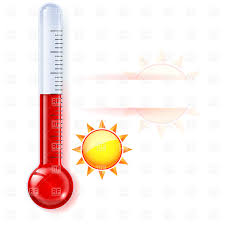
The thermometer reached up above 90 degrees for 11 days of the past 2 weeks and looks to be in that same range for the foreseeable future. Meanwhile, we’ve received only 1/2 an inch of precipitation over the past month (according to the weather station at CSU). Bottom line: it’s HOT and DRY but then, you’ve probably noticed! Your plants have noticed, too. The most obvious need when dealing with heat is WATER. However, getting the water right for your plants can be tricky. Watch out for these deceptions:
Wilting. Chances are your plants are wilting because they’re thirsty, but plants will wilt both when they have too much water and when they don’t have enough. Wilting only indicates there’s a problem, it’s not enough to diagnose the problem. Also, be aware that tomatoes routinely wilt in the heat of the day, but that is just their mechanism for dealing with the heat and doesn’t necessarily mean they need additional water.
Dry Soil Surface. Because the sun is baking down on it, the surface of the soil may be dry, but underneath there may be plenty of water. I have been fooled by soil that is dry and cracked on the surface only to discover mud underneath. Push your finger, a screwdriver or a moisture meter down into the soil several inches to be certain. The heavy, clay soil which makes digging so challenging in this area has an amazing ability to retain moisture below the surface. The soil in potted plants can be just as deceptive with the top dry and yet damp underneath that dry layer. Over watering is just as detrimental to plant health as drought.
Reduced blooms, or more blooms. Some plants take a break from flowering in the heat of the summer, but they’ll bloom again when the temperatures cool. Some vegetables (squash in particular) will drop their flowers because they don’t have the energy to produce fruit in this heat. Other plants, like spinach and lettuce, “bolt” and send up their flowers and seeds in a last effort to reproduce before they expire in the heat.
Yellowing foliage, especially for blue grass. The turf grass frequently turns yellow-brown, but it isn’t dead, it’s just dormant and will return to green when both the air and the soil temperatures drop.
Try to get outside to care for and water your plants in the morning or evening so you can take refuge in air conditioning during the heat of day.



